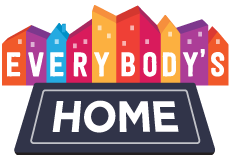Communities carrying the cost of housing shortfall
05/04/2022
Underinvestment in social and affordable housing is costing local communities tens of millions of dollars per year through wider social and economic impacts on health, justice and employment, with the cost set to explode over the next decade.
Costs of inaction: social and economic losses from the social and affordable housing shortage was completed by Associate Professor Andi Nygaard, Centre for Urban Transitions, Swinburne University of Technology. It quantifies for the first time which communities have missed out the most from the Federal Government’s stubborn refusal to invest in social housing. The cost to the national economy now is $676.5 million annually in foregone social and economic benefits, rising to $1.286 billion by 2036.
Included in the calculations are:
- public sector cost (health cost associated with homelessness and stress/depression)
- health and justice system costs associated with domestic violence,
- private sector costs associated with stress/depression,
- private educational attainment,
- reduced disposable income, and
- wellbeing values.
The modelling breaks down which communities are carrying the greatest cost. By economic cost, the ten communities most affected are clustered on the eastern seaboard:
| Region | Annual cost (2020) | Annual cost (2036) |
| Sydney – Inner South West | $28,221,678 | $52,454,780 |
| Gold Coast | $27,858,703 | $45,613,499 |
| Melbourne – Inner | $22,936,168 | $51,180,997 |
| Sydney – Parramatta | $21,809,502 | $42,339,952 |
| Richmond – Tweed | $19,550,178 | $24,320,608 |
| Melbourne – West | $18,116,958 | $34,204,058 |
| Sydney – City and Inner South | $16,554,980 | $34,912,178 |
| Sunshine Coast | $16,542,274 | $27,264,600 |
| Melbourne – South East | $15,292,891 | $29,577,375 |
| Northern Territory – Outback | $15,228,426 | $32,370,538 |
Everybody’s Home national spokesperson, Kate Colvin, said individual communities were wearing the cost of substandard investment.
“Prevention is always the best medicine, but when it comes to housing stress and homelessness we are pushing Australians into acute stress and dysfunction. The real world impact is extra trips to hospital emergency wards, more psychological counselling, lower school achievement, lower incomes, women and children unable to escape from family violence, and more stress on our police and courts.
“Our current housing policies are utterly perverse and we are all paying for it.
“Australia is among a handful of the world’s wealthiest nations, yet our housing policies are so lopsided we are making people sick or requiring them to live with violence. Each year, for example, an estimated 7,690 women return to perpetrators because they have nowhere to go, and an estimated 9,120 women become homeless.
“This is a social and economic time bomb that will only be defused by investing in adequate social and affordable housing.
“At least forty per cent of the population is unlikely to ever have the financial firepower to own a home. Amid skyrocketing rents, the best solution is to provide more options for people on low and modest incomes.
“Regardless of who forms the next government, this problem is not going away. The longer it is left to fester, the worse it will get.”
Dr Nygaard said the shortage of social and affordable housing was imposing large and compounding costs on Australian society.
“These costs cannot be ignored. The social and economic problems associated with our affordable housing shortage will only increase over the next decade if we keep doing what we have been doing – very little”.
“In the absence of additional investment communities are going to see considerable strain on homeless shelters, police, hospitals and other public services. Households will have less to spend on children’s wellbeing and education. Employers may also feel the cost of increased absenteeism.”
